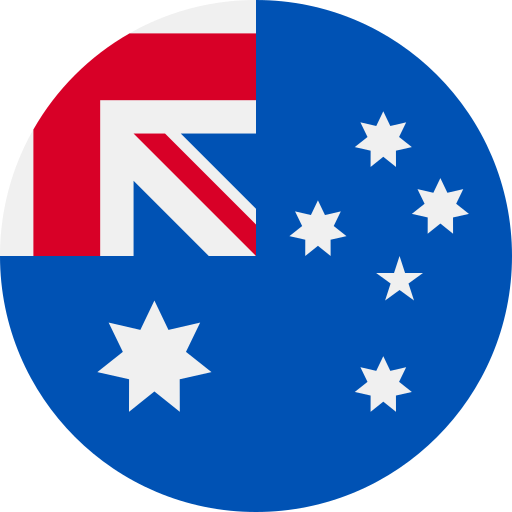Key Takeaways
- Influence on Global Dialects: Australian English has significantly impacted British and American dialects, introducing unique slang and phrases that enhance everyday communication.
- Cultural Contributions: The evolution of Australian English reflects a blend of British influences and Indigenous languages, enriching its vocabulary with terms like “kangaroo” and “boomerang.”
- Phonetic Distinctions: Characteristic vowel shifts in Australian pronunciation create a distinct sound pattern that influences accents in other regions, showcasing its auditory uniqueness.
- Media’s Role in Language Exchange: Exposure to Australian films, television shows, music, and literature has facilitated the adoption of Aussie expressions globally, particularly among younger audiences.
- Regional Variations: Different regional dialects within Australia have emerged over time due to migration patterns and media influence, reflecting the country’s diverse cultural landscape.
Ever wondered how Australian English has shaped other dialects around the world? With its unique slang and distinct pronunciation, Aussie English isn’t just a quirky variation; it’s a fascinating influence that extends far beyond the shores of Australia.
As global communication becomes increasingly interconnected, understanding these linguistic shifts can enhance your appreciation for language diversity. From British to American English, you might be surprised at how much Australian expressions and phrases have made their mark. Dive into this exploration of Aussie English’s impact on various dialects and discover why it matters more than ever in our multicultural world.
Australian English Influence on Other Dialects
Australian English plays a notable role in influencing other dialects, particularly British and American variations. Unique expressions and slang terms from Aussie English have found their way into everyday language used by speakers worldwide. This influence often enriches communication styles, introducing fresh phrases that resonate with younger generations.
For instance, words like “arvo” (afternoon) and “brekkie” (breakfast) reflect the casual nature of Australian culture. These terms not only add color but also showcase the linguistic creativity inherent in Australian society. You might notice such phrases popping up in conversations or social media posts among diverse groups, indicating a broader acceptance of this vibrant dialect.
Pronunciation differences are another area where Australian English stands out. The characteristic vowel shifts can be heard in various contexts, affecting how certain words are pronounced even outside Australia. For example, an American voice actor adopting an Aussie accent may unintentionally incorporate some of these pronunciation traits into their performances.
Moreover, as global media continues to grow, exposure to Australian content—be it films or TV shows—offers listeners opportunities to engage with this unique dialect regularly. As you consume different forms of entertainment featuring Aussie characters or narratives, you’re likely picking up bits of vocabulary and idioms that seep into your own speech patterns over time.
The impact of Australian English reaches beyond its borders. It shapes how people communicate across various platforms while adding layers to cultural exchanges around the globe.
Historical Context
Australian English has a rich history that reflects the country’s unique cultural evolution. Its origins trace back to the early colonial period, influenced primarily by British settlers in the late 18th century. This foundation established a distinct dialect, setting it apart from its British roots.
Origins of Australian English
The birth of Australian English began with diverse linguistic inputs from British immigrants who brought their regional dialects. Early convicts and settlers introduced words and expressions that merged over time, creating a new vernacular unique to Australia. Indigenous languages also contributed vocabulary, enriching this evolving form of communication. For instance, terms like “kangaroo” and “boomerang” originated from Aboriginal languages, showcasing the blending of cultures.
Development of Dialects
As Australian English developed, regional variations emerged across states and territories. These local dialects reflect geographic diversity and social influences within Australia. Factors such as migration patterns and urbanization played significant roles in shaping these distinctions. The influence of media—especially radio and television—further spread certain linguistic features nationwide.
The global reach of Australian culture through entertainment has also impacted other dialects around the world. As audiences engage with Aussie films or music, they often pick up on slang or pronunciation shifts characteristic of this vibrant dialect. Consequently, elements of Australian English seep into other forms of communication globally, contributing to an ongoing exchange between language varieties.
Understanding this historical context provides insight into how Australian English not only evolved but continues to influence various dialects worldwide today.
Key Features of Australian English
Australian English boasts distinct characteristics that set it apart from other dialects. These features encompass unique phonetic variations and a rich vocabulary that contribute to its vibrant identity.
Phonetic Variations
Phonetic variations in Australian English highlight its unique sound patterns. Vowel shifts play a significant role, with words like “mate” pronounced more like “mait.” The tendency for Australian speakers to flatten vowels creates a relaxed auditory experience. Intonation patterns often differ as well, adding a musical quality to speech. Such differences can be heard not only within Australia but also influence accents in regions where Aussie culture has permeated.
Unique Vocabulary
Unique vocabulary defines Australian English, showcasing the creative spirit of its speakers. Slang terms such as “arvo” (afternoon) and “brekkie” (breakfast) reflect casual communication styles rooted in Australian culture. Moreover, phrases derived from Indigenous languages enrich the vernacular further, providing depth and cultural context. As global media exposes audiences to these expressions, many find themselves adopting elements of this distinctive vocabulary into their everyday conversations.
These features illustrate how Australian English stands out while simultaneously influencing other dialects worldwide through shared language experiences and cultural exchanges.
Regional Influences
Australian English significantly influences various regional dialects, particularly in the UK and the US. Its unique expressions and relaxed pronunciation resonate beyond Australia, enriching global communication.
Impact on British Dialects
Aussie slang has found its way into British dialects, especially among younger speakers. Terms like “mate” and “no worries” often appear in informal conversations across the UK. This linguistic exchange reflects a growing cultural connection between Australia and Britain, driven by media exposure such as television shows and music. The playful nature of Australian phrases appeals to British audiences, enhancing their casual speech. As a result, some British regions may exhibit subtle shifts in vocabulary influenced by Aussie expressions.
Influence on American English
Australian English also impacts American English, primarily through popular culture and entertainment. Movies featuring Australian actors or storylines often introduce American audiences to Aussie terms like “arvo” or “brekkie.” These words have started appearing in everyday conversations among Americans seeking to adopt a more relaxed lexicon. Additionally, certain phonetic characteristics from Australian accents can occasionally be heard in American speech patterns as people are exposed to diverse voices through media platforms. Such interactions showcase how language evolves with cultural exchanges that transcend geographical boundaries.
Overall, the regional influences of Australian English continue shaping dialects worldwide, demonstrating its vibrant role in global communication.
Cultural Exchange Through Media
Australian English significantly influences other dialects, especially through media channels like television, film, music, and literature. These platforms serve as vibrant conduits for cultural exchange, introducing unique slang and pronunciation to diverse audiences.
Television and Film
Television shows and films featuring Australian characters or settings often showcase distinctive Aussie slang and expressions. Characters might use phrases like “no worries” or “arvo,” making them relatable to viewers around the world. This exposure helps popularize Australian English terms while creating a more casual atmosphere in dialogue that resonates with younger generations. As international audiences engage with these productions, they naturally adopt elements of this vernacular into their everyday language.
Music and Literature
Music plays a vital role in spreading Australian culture globally. Popular artists frequently incorporate local slang into lyrics, which not only entertains but also educates listeners about the nuances of Aussie English. Books by Australian authors introduce readers to unique phrases and cultural references that enrich their understanding of the dialect.
Literature further enhances this linguistic exchange by presenting culturally significant themes alongside distinct language features. Whether through storytelling or poetry, these works invite readers to explore new vocabulary while appreciating the creative expression found within Australian English.
Conclusion
Australian English is a vibrant and dynamic dialect that’s making waves across the globe. Its unique slang and pronunciation not only enrich conversations but also foster cultural connections. As you engage with different dialects, you’ll likely notice the subtle influences of Aussie expressions in everyday language.
This linguistic exchange highlights the power of culture in shaping how we communicate. The growing presence of Australian English in media has opened doors for further adoption, especially among younger generations. Embracing these influences allows you to appreciate the diversity of language and its ability to evolve alongside cultural trends.
Frequently Asked Questions
What is Australian English?
Australian English is a unique dialect that arose during the colonial period, combining elements from British regional dialects and Indigenous languages. It features distinct slang, pronunciation, and vocabulary that reflect Australia’s casual culture.
How has Australian English influenced other dialects?
Australian English has impacted British and American English through the adoption of its slang terms and pronunciation. Words like “arvo” (afternoon) and “brekkie” (breakfast) are increasingly used in informal conversations globally.
Why is Aussie slang popular among younger generations?
Aussie slang resonates with younger audiences due to its casual nature and creativity. Exposure through media, such as movies and music, makes these expressions relatable and appealing in everyday communication.
What are some key features of Australian English?
Key features include specific phonetic variations, vowel shifts, unique intonation patterns, and a rich vocabulary filled with creative slang derived from both British influences and Indigenous languages.
How does media contribute to the spread of Australian English?
Media plays a crucial role by introducing Aussie expressions through television shows, films, music lyrics, and literature. This exposure helps people worldwide adopt aspects of Australian culture into their language use.
Are there regional variations within Australian English?
Yes! Australia has diverse geographic regions that contribute to different accents and local slang. These variations highlight the linguistic richness shaped by social influences over time.
What cultural connections exist between Australia and Britain regarding language?
Cultural ties have led to the sharing of phrases like “mate” and “no worries” in British dialects. Media exposure enhances this connection as younger speakers frequently interact with Aussie content.
Can you give an example of how Aussie terms have entered American English?
Terms such as “arvo” (afternoon) have found their way into American conversation largely due to popular culture influences like films featuring Australian characters or themes familiarizing audiences with these words.







